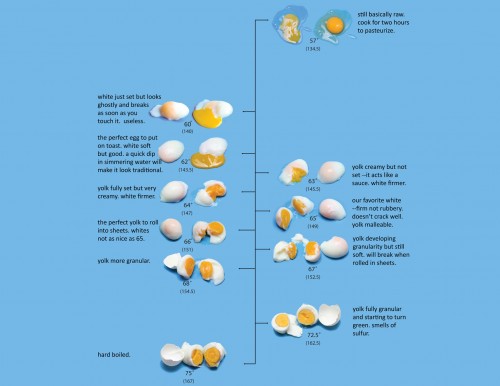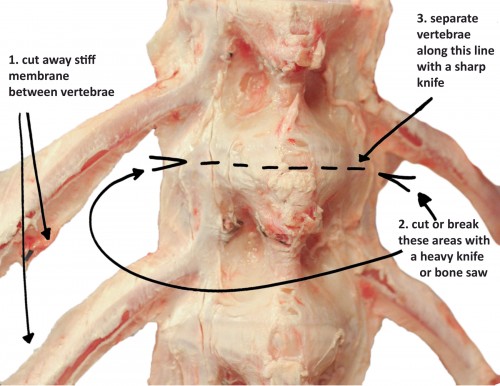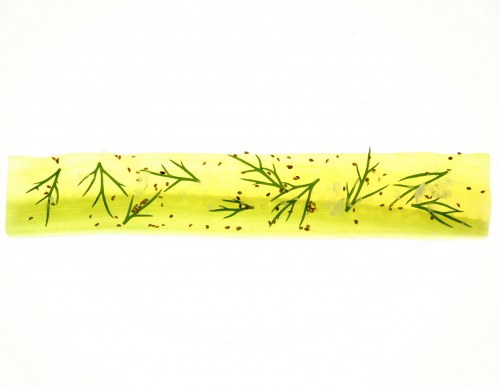by Dave Arnold
Should you find yourself in the Morningside Heights neighborhood of Manhattan in the next month please stop by the Common Love show at Columbia University’s Wallach Art Gallery, where you can see some of my images from this blog alongside the work of 12 other alumni of the Columbia University School of the Arts. I got my MFA from Columbia in 1997, and performance sculpture was my forte (see this NY Times article for a taste).
The Images:
“Tea Time” 2010, time lapse photograph montage
The difference between brewing tea in a slowly stirred cup (left), an unstirred cup (middle), and a quickly stirred cup (right). The entire steep time is 2 minutes.
This image is from a post I never got around to writing. Here is the mini post-in-post:
About a year ago, Nastassia, Harold McGee and I went on a mega citrus tasting. On that same trip we visited Roy Fong, the owner of San Fransisco’s Imperial Tea Court , for a lesson in Gong Fu Cha with some delicious and rare Pu-erh teas. In Chinese, gong fu means “skill derived from effort and practice” and cha means “tea.” Gong fu cha, therefore, is the practice of deeply focusing and practicing the art of brewing, drinking, and enjoying tea.  Here in America, when we are talking about this same sense of focus, skill, and training aimed towards kicking someone’s butt, we usually call it Kung fu — which is the same Chinese word spelled differently. Gong fu cha is tea for badasses. See here. Pu-erh tea is tea pressed into cakes and aged — sometimes for decades. It is collected and traded like fine wine, and commands similar prices and respect. Fong is an expert in choosing and aging Pu-ehr teas. He has his own aging warehouses where he carefully rotates the cakes of tea in response to changes in season and the needs of individual lots. Good news: he is starting a tea farm in California, an unprecedented idea. I asked him what he wanted the tea to taste like. His reply: “whatever California wants the tea to taste like.” Wow. We left knowing that there was a lot to know.
I noticed that Roy watched and stirred his tea as it brewed. When I returned home I ran a small experiment to examine the effects of stirring. I set up three identical glasses with identical amounts of tea and added identical amounts of water. The glass on the left was slowly stirred with a Teflon coated magnetic stir rod. The glass in the middle wasn’t stirred at all. The glass on the right was stirred quickly with a Teflon coated magnetic stir rod (notice the vortex). The upshot: any stirring at all greatly accelerates brewing, but stirring quickly doesn’t speed the process much more than slow stirring does. Duh.
“Carrot Cardamom Oyster” 2009
This photo is from an early post, “Carrot and Cardamom Oysters,” describing a technique I developed to flavor live oysters by feeding them hyper-blended flavored sea water. I got the idea while reading the book “A Geography of Oysters,” and thinking about Michael Keaton’s character in Night Shift, who wants to feed mayo to tuna while it is still alive. I can’t do tuna, but I can do oysters.
“The Principles of Rotary Evaporation” 2006 (posted 2009), photo illustration
This image comes from my primer on the art of distilling under vacuum with a rotary evaporator.
“The Egg Chart” 2006 (posted 2010), photo illustration
From my as-yet unfinished primer on Low-Temperature and Sous-Vide cooking.
“Breaking Down a Tuna Spine” 2009, photo illustration
From my post on … you guessed it! Breaking down a tuna spine to get the delicious spinal jelly, which tastes like seawater gelee, and preserving the bones to use as serving dishes.
Martini Cucumber, 2007
This image predates the blog. It is a cucumber that I vacuum infused with gin and vermouth. Yum. I used a chamber vacuum machine to suck the air out of a porous piece of cucumber sitting in a bath of ice-cold gin and vermouth with a hint of simple syrup to counteract bitterness. When air is let back in the chamber the liquid is injected into the resulting voids and a martini pickle is instantly formed. It’s garnished with dill, celery seed, and salt. You can see the procedure in this NY Times video.
Art Stuff:
I was extremely happy, and a little surprised, to be selected for the alumni art show. I don’t consider what I do to be art. This might be a good time to mention that I can’t think of a more boring discussion than the distinction between art and craft, and where different types of cooking fall on that spectrum. If this sort of debate interests you, you might take a look at the worst book I ever read, Cooking: The Quintessential Art, by Herve This and Pierre Gagniere.
The curators of the exhibition asked me, “as a cook who used to be a visual artist, how would you compare the ways you approach projects in each discipline?” I find this to be a much more interesting question. Here is my video answer:
[youtube=http://www.youtube.com/watch?v=zm-fbNPYNW0]







And then go to the Hungarian Pastry Shop on Amsterdam!
You know it!
Funny you mention, Cooking: The Quintessential Art. I don’t even know where to begin… I just don’t know where to begin… How about; Agreed! Worst book I’ve ever read.
You’ve obviously never read “Dining in Grand Style” by Elizabeth Schneider (http://www.amazon.com/Dining-Grand-Style-Elizabeth-Schneider/dp/0722510039).
Do you have any photos of the sculptures using frog muscles? That sounds super interesting!
I don’t have any scans Seth. It was the photo-only days!
One can see the early manifestations of the artistic curiosity that would eventually lead you to ike jime.
I don’t consider what I do to be art…Why? as I’ve know art is a self expression of yourself and your work. Cooking is for most of professional chefs is a self expression of how they fill at the time. Food is also moody. It can make you happy and take you to the pass also. If your looking for some new recipes fill free to visit.
Hi Dave-
One MFA to another, would you be available to chat for a few minutes for an article I’m writing about DIY kitchen hacks as economical alternatives to expensive gadgetry? I don’t see an email for you on the site, so I’m leaving this as a comment.
Cheers
Hey Peter, Sorry, Just saw this. darnold.fci@gmail.com
So pleased that you’re delving into tea. And you can’t get a better introduction than Roy Fong!
He is pretty cool. We actually have 2 tea gurus, Roy Fong and Mike Harney –very different approaches.
please excuse my posting here.. but i really have to ask this :
why do eggs when i “fry” them in a pan of tomato sauce take so much longer to set ?
if i fry them normally the yolks will set in 2-3 minutes.. when in the sauce, the whites set but the yolk remains wobly for much longer..
thanks !
Stef
Hello Stephano,
My guess (and it is only a guess) is that your heat conduction is poor through the tomato sauce because it limits convection. Water isn’t going to transmit heat as fast as the pan –especially if it can’t move around.